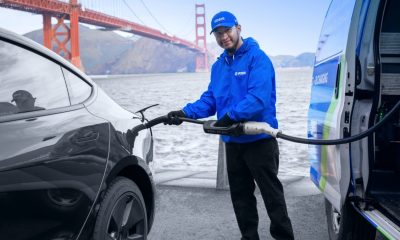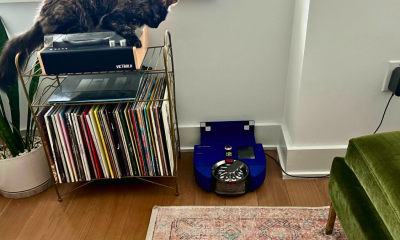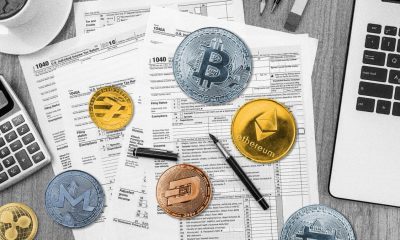Technology
Uber jumps through hoops to keep drivers ‘independent contractors’


Uber wants drivers to accept every single ride so passengers don’t wait too long or pay too much for rides. But the company also needs to convince lawmakers that drivers are their own bosses. So it’s getting creative.
Uber doesn’t want to violate California’s , which requires companies to classify workers as employees if they’re not truly independent. That could cost Uber $508 million annually, according to .
So to avoid AB 5 regulations in California, Uber made it so drivers can set their own rates and cancel rides as often as they want — all to avoid being forced to give drivers healthcare, unemployment, and sick leave.
While the new measures are limited to California now, they could spread to other states with laws similar to AB 5.
This week, Massachusetts to force the companies to treat its drivers as employees with benefits. Both companies have pushed back against the suit.
“This lawsuit threatens to eliminate work for more than 50,000 people in Massachusetts at the worst possible time,” a Lyft spokesperson said in a statement. Similarly, Uber said “we need to make it easier, not harder, for people to quickly start earning an income.”
But when those drivers get sick, it’s the government that ends up paying for their healthcare, said Massachusetts Attorney General Maura Healey
Uber claims that if it was forced to classify drivers as employees, prices would go up anywhere from 20 to 120 percent and thousands of drivers (about 75 percent) wouldn’t be able to drive anymore.
But proponents of the law say it’ll give drivers higher hourly wages, more consistent work, employment protections, and those coveted benefits. Throughout the U.S., Uber works with about 750,000 drivers.
Uber and Lyft, along with delivery apps DoorDash, Postmates, and Instacart, put an on California’s ballot in November that would keep drivers independent contractors, but with limited benefits like guaranteed minimum earnings.
Uber commissioned a survey of 718 drivers in California. It found that 70 percent of them supported the ballot measure, Proposition 22. But labor groups said it would “would close off decades of protective labor and anti-discrimination laws in California for their workers,” and signal that “corporations can establish a permanent class of unprotected workers.”
In the face of lawsuits, Uber is scrambling to appease both drivers and passengers.
Since the end of last year, drivers get a lot more information in California, like where a passenger is heading before accepting a ride so drivers can decide if they want to pick them up or not. Uber also lets drivers decline as many rides as they want, something that’s not the case in the rest of the country.
As of this month all drivers in California can add a multiplier to any ride in an effort to give more control over rates to drivers, who normally have to take what Uber gives them. So a driver can charge five times as much as Uber suggests (though good luck getting a passenger willing to take such a rate).
The latest effort to give drivers control while keeping riders happy? It’s called Drive Pass, an up-front, set fee drivers can buy in packs of consecutive rides (including those the driver cancels or declines).
Uber normally takes 25 percent of the money earned from each ride. That makes drivers selective. They prefer longer rides that bring in more money and don’t involve as many pick-ups and drop-offs, which amount to a lot of wasted time.
So Uber is trying to change their behavior. With Uber’s new Drive Pass, drivers can avoid Uber’s fees for 10 rides, for example, — as long as they pay $30, or $3 per ride, upfront. Drivers save money, but they’re forced to take every ride, no matter how short.
SEE ALSO: Uber drivers and passengers will be required to wear face masks in the U.S.
As the explains, “the incentive for Uber here is to get more drivers to accept more rides, thereby maintaining their current level of passenger satisfaction.”
Uber already offers it to drivers in Sacramento, San Diego, and Orange County, and it will be available to more of California in the coming weeks.
Here’s how Uber framed it: “Drive Pass gives California drivers in select cities a new way to earn money through the Uber platform.”
Notice the language carefully lays out how this gives drivers command over their earnings, without mentioning how it’s pushing drivers to keep picking up all passengers. And Uber could do things like this a lot more often if other states follow the lead of California and Massachusetts.
-

 Business4 days ago
Business4 days agoAPI startup Noname Security nears $500M deal to sell itself to Akamai
-

 Business6 days ago
Business6 days agoYoshi Mobility has come a long way since gassing up cars on the side of the road
-

 Entertainment4 days ago
Entertainment4 days agoHow to watch ‘Argylle’: When and where is it streaming?
-

 Entertainment3 days ago
Entertainment3 days agoNASA discovered bacteria that wouldn’t die. Now it’s boosting sunscreen.
-

 Business4 days ago
Business4 days agoUS think tank Heritage Foundation hit by cyberattack
-

 Entertainment3 days ago
Entertainment3 days agoDyson 360 Vis Nav robot vacuum review: Dyson should just stick to upright vacuums
-

 Business3 days ago
Business3 days agoTesla drops prices, Meta confirms Llama 3 release, and Apple allows emulators in the App Store
-

 Entertainment4 days ago
Entertainment4 days agoCrypto and taxes: Which forms you need to file



















